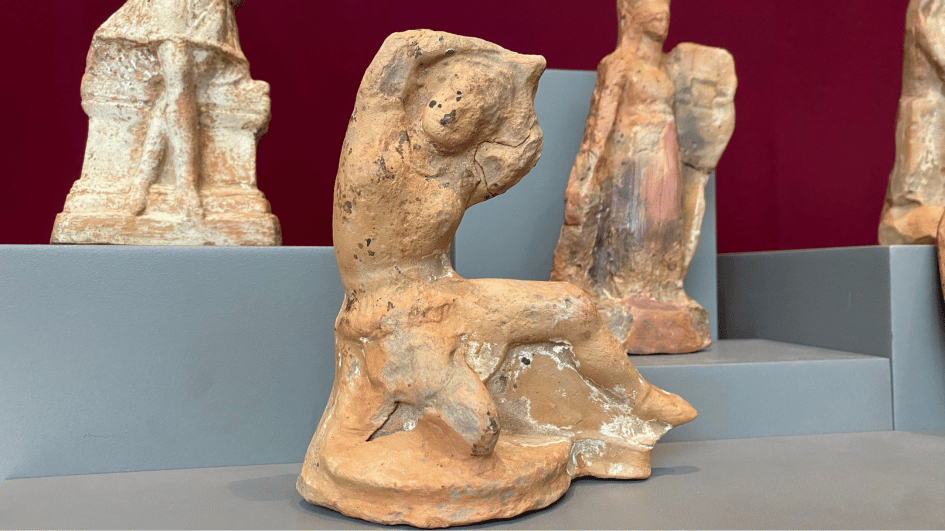
Many child graves have been unearthed during the excavations carried out last year in the necropolis area of the ancient city of Tenedos, located in the Bozcaada district of Çanakkale.
The area is a tourism center visited by nearly 50,000 local and foreign tourists every year.
Excavations have revealed that children who died at an early age were buried with their gifts in jar graves, amphora graves and stone masonry graves.
The excavations in the ancient city of Tenedos were carried out by a team of 12 people under the leadership of Professor Turan Takaoğlu at the Çanakkale Onsekiz Mart University's Archaeology Department. The 2023 season works were first made in Bozcaada Castle and then in the necropolis area of the ancient city in 2023 season.
New and striking data were obtained especially about child burials in the necropolis excavations. It was seen that a second pithos or jar tomb from the 6th century B.C. was later placed inside a pithos or jar tomb from the 4th century B.C. It was determined that six terracotta figurines and a horse-foot-shaped bronze pin were placed as gifts for the dead in the jar tomb built later. Two of these figurines, which can generally be associated with the cult of Dionysus, the ancient Greek god of festivals, depict two dancers wearing Eastern costumes and Phrygian headgear, one depicts a woman playing the stringed musical instrument lyre, and the remaining three depict standing women.
The placement of statuettes depicting dancers and musicians in a tomb is seen as an archaeological indicator of integrating with God through dancing, reflecting the belief characteristics of the period.
The excavation findings underwent restoration and conservation processes by Çilem Yavşan, a member of the Tenedos Excavation team, and then were delivered to the Troy Museum Directorate.
Ömer Can Yıldırım, the deputy head of the excavations, said: “In the necropolis area, we identified an area previously unknown in the archaeological literature and limited as a children's burial area. The structure we define as a Pithos grave, one of the graves found in this area, has the feature of a 'pithos within a pithos,' which was previously unknown in archaeological data."
The general burial history here shows that the first burial was made in the 6th century B.C., and then a second burial was made approximately 200 years later, in the 4th century B.C. in the Late Classical Period. The artifacts found in the burials, including terracotta figurines and a bronze needle, were delivered to the Troy Museum Directorate in Çanakkale.
Stating that according to the general characteristics of the works, the dressing styles and goddess motifs are signs of the belief of this period and the respect felt for children buried at a young age, Yıldırım said: “When we evaluate these works in terms of history, the stylistic and analogical features of the works show that these works were produced approximately 2,700 years ago and were placed in the grave of a child who died at a young age."
"We can say that the types of clothing in the artifacts are related to the Eastern Phrygian culture and to the cult of Kybele as well as Dionysus. This feature clearly shows us that this religious ideology was dominant in the Tenedos necropolis in the 4th century B.C. The typological features reflected by the works provide us with significant data in understanding the cultural characteristics of the Tenedos necropolis during the Late Classical Period.”